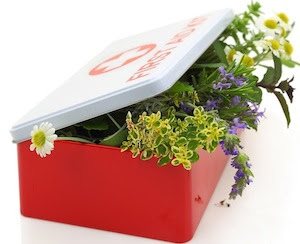Welcome to our 46th year and the Rethinking Cancer Newsletter #61!
Things have changed a lot since Ruth Sackman and her husband, Leon, co-founded FACT in 1971. In those days, cancer was a very hush-hush, almost taboo topic. Even the idea of putting the word “cancer” in the name of the organization, as Ruth did, was considered very bold and possibly risky. Doctors who dared to treat patients with nutritional therapies, i.e., not the legally sanctioned surgery, chemo, radiation, could be raided and/or jailed. Alternative practitioners warned their patients never to say they were being treated for cancer, rather just trying to improve diet and overall health.
Today cancer is at epidemic levels and everybody’s talking about it. Many have seen the failure and suffering wrought by the “legal” treatments (all focused on destroying cancer cells rather than the repair and strengthening of the body) and there are far more resources openly supporting unconventional approaches (though conventional treatments are still the only legally sanctioned modalities). The alternative health movement is booming — over $30 billion in profits last year. But with commercial success, there have also come a lot of questionable resources, the lack of clinical experience, the touting of ineffective, sometimes harmful new miraculous cures, superfoods, supplements and the like.
As a nonprofit educational organization, we have no vested interest in the alternative health industry. Our role is to give you the facts as we’ve learned them over many years of experience with a wide range of patients, clinicians, therapies and facilities. As you may have noticed, we don’t focus just on cancer. Cancer is the end result of a long process of unnatural living, avoidable and sometimes unavoidable toxic exposures, overstressed lifestyle, etc. We believe that cancer can be managed — and in most cases prevented — by learning to make wise lifestyle choices compatible with this fast-paced 21st Century world. We seek to give you overarching principles that will help you make sense of the deluge of information and misinformation out there.
In short, we want you to be your best doctor.
To your health!
Foundation for Advancement in Cancer Therapy (F.A.C.T.)
P.S. Thanks so much for all your input. If you feel the information you receive here is of value, we hope you’ll consider any sort of (tax-deductible in the U.S.) donation. And do check out our film on iTunes and keep in touch on Twitter, Facebook and our YouTube channel!

Are Germs Really the Problem? By Ruth Sackman, Co-founder and Former President of FACT
There is a school of thought about germs that differs radically from the germ theory of disease based on the work of Louis Pasteur (1822-1895). And Pasteur’s germ theory is what most of our medical care today is based on.
Pasteur believed that germs were the cause of disease and, therefore, the primary goal of treatment should be their elimination. But at about the same time that Pasteur was propagating his theory, a highly respected chemist-physician-biologist, Dr. Antoine Bechamp (1816-1908), along with others, strongly disagreed. Their views, though logical, were obscured by the more exciting presentation by Pasteur, whose talent for self-promotion, some have posited, far exceeded his scientific investigatory skills. Read More

An Herbal First Aid Kit
Herbal medicine is the oldest and still most widely used system of healing in the world today. Preparations, made exclusively from plants (seeds, roots, stems, flowers, leaves), may be put into many forms — tinctures, extracts, teas, salves, etc. When used appropriately, these remedies can be highly effective, relatively inexpensive and minus the toxic side effects of synthetic pharmaceutical meds. Here are some suggestions for your home herbal first aid kit: Read More

Blue Light — Something Else to Worry About?
Cavemen had plenty of things to worry about — lions, bears, starvation….. Today, in the digital age, we’ve got a different set of anxieties. One that is coming more and more into the spotlight is blue light.
Before the advent of artificial lighting, the circadian rhythms of all living things — the natural 24-hour wakefulness and sleep cycle which affects many biological processes — were attuned to the major source of light: the sun. People spent their evenings in relative darkness, a time of rest and recuperation, and rose with the morning sun, energized for the challenges of daily survival. But today, our evenings are filled with manmade illumination. Too often we are up at all hours and the rhythms of our bodies are all jangled up in pursuits no caveman could have fathomed. Read More
Kale Chips
Should you be eating all vegetables raw every chance you get? No, actually. Contrary to the belief of many smoothie/salad afficionados, kale, for example, is not a good choice for raw eating. A little is okay, of course, but overloading on this, as has become, for many today, almost a religion, can create thyroid problems. A member of the cruciferous family, kale contains goitgrogens that interfere with the formation of thyroid hormone, especially in people with iodine deficiency. Gentle cooking above 2120 F.(1000C.), however, significantly reduces the goitrogens, so you can enjoy the pleasures and many nutritional benefits of this vegetable. This would be true for other cruciferous veggies like broccoli, Brussel sprouts, collards, etc. (For those who suffer chronic thyroid disorders, it might be wise to consider bypassing cruciferous vegetables altogether.)
- 6 cups torn and de-stemmed curly kale, in 2 inch or so-sized pieces
- 2 tsp. unrefined coconut oil, cultured or grass-fed organic butter or ghee
- ¼ tsp. unrefined salt
- Wash and spin dry the kale leaves until completely dry.
- Place dried leaves in a large bowl. Add the oil and toss with hands until every leaf is coated.
- Sprinkle on salt and toss again to spread evenly.
- Place parchment paper on a baking sheet and arrange the kale evenly without overlapping.
- Bake in a 300-degree F. oven until crisp and dark green, approx. 12-15 min.
- Let cool completely before removing from the pan or eating. This allows the chips to crisp up further. Keep in an air-tight containing. (Don’t refrigerate — the chips will soften with moisture and loose their crunch!)





